The United States Men’s National Team has seen better days in recent years. After missing out on the 2018 FIFA World Cup in Russia, they needed a change. After appointing Gregg Berhalter, former US player and manager in the MLS, the team’s fortunes have been trending upwards. The 2018 disappointment meant major change was needed, and since then, the United States has seen a tremendous emergence in young players who are attracting Europe’s biggest clubs.
Christian Pulisic, currently at Chelsea, has been pegged by the media as the United States golden boy due to his massive transfer to the Premier League. He was the first to shatter the perhaps negative perception of American players in Europe. Now, American youth all over the continent has emerged. Sergio Dest, Weston McKennie, and Gio Reyna are three high profile names that are all under the age of 22. Dest recently signed for FC Barcelona; McKennie recently signed for Juventus, and Reyna is enjoying a fruitful partnership with Norwegian phenom Erling Haaland at Borussia Dortmund.
Any American seeing these players breaking through at the world’s biggest clubs has something to be excited about. However, just because a nation has terrific players doesn’t always mean they will gel well together. Part of the challenge of international football is finding a system that works for players who are prone to informational overload. It is difficult for players to change their style of play for their international manager while still performing week in and week out for their club.
Berhalter has the challenge and privilege of bringing these exciting, attacking-minded players to the top of world football. The road to the 2022 World Cup will be long and tiring, but in recent weeks, the American manager has been experimenting with his squad to find tactics that will pay dividends. This tactical analysis and scout report will examine the attacking tactics of the United States in their recent 0-0 draw with Wales. Despite the lack of goals, the American’s were fantastic in their execution of complex attacking tactics.
Lineup
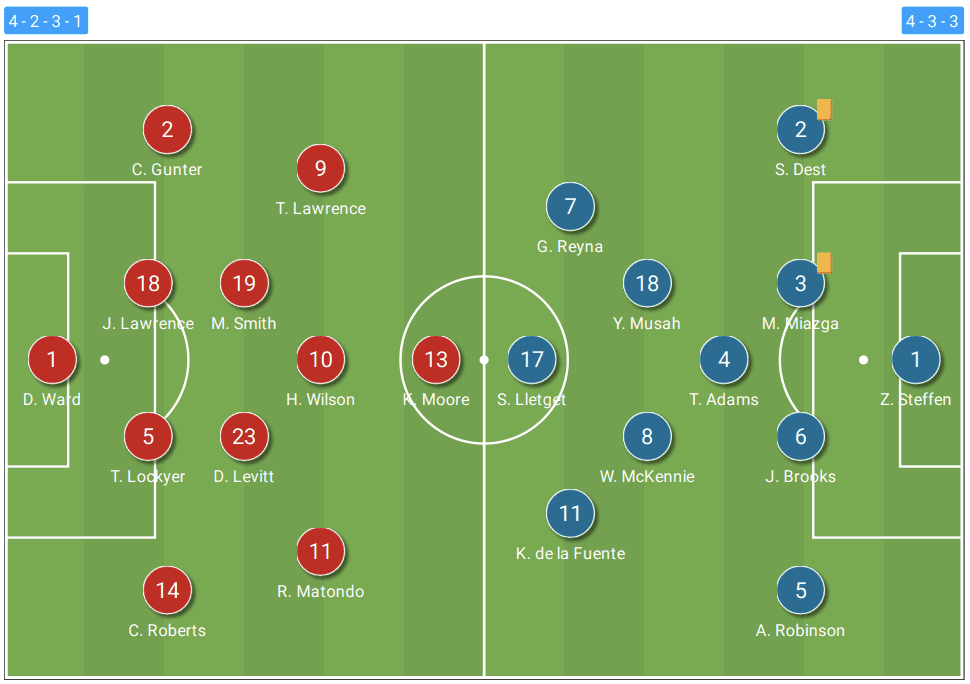
The US started in a 4-3-3 formation in Wales. The key to this formation is the balance in the midfield. Berhalter achieves this balance by starting McKennie, Tyler Adams, and Yunus Musah in the middle. Musah has the dynamic ability to play in the middle or out wide, allowing the manager to implement more complex tactics. Upfront, youngster Komrad de la Fuente and Reyna occupied the wings. The defense included Dest and Antonee Robinson, who would push forward constantly throughout the match.
Front Three
The first interesting tactic that the US implemented was their movement up front. While most tacticians would utilise wingers in a 4-3-3 to get in behind, Berhalter had other ideas. He knew that with Reyna in the team, it would allow for the dynamic play that had the potential to be successful. At Dortmund, he has scored once and assisted three times in seven matches while playing just behind Haaland in the center forward role. At the Bundesliga team, Reyna does extremely well getting on the ball in the middle of the pitch, and this is something that Berhalter incorporated into his sides’ attacking tactics. While there is a lot to unpack in these tactics, we will only focus on the front three movements in this section of the analysis.
Reyna is encouraged to be the main ball carrier in this United States side. Despite being put on the right-wing, the team’s tactics show quickly that the position is only a placeholder. The young American constantly comes inside to the half-spaces and the middle of the pitch. This begins to create the attacking tactics for the front three to implement. In the sequence below, you can see the shape that is beginning to take place. Reyna, highlighted, can be seen occupying the half-space to try and receive the ball in a dangerous area to attack. This area is a great place to create chances because it puts the opposition centre-back and outside back in challenging situations. They have to decide if they will press the ball. Ideally, there is a defensive midfielder helping to protect the half-spaces, but because they have so much ground to cover, it becomes difficult to achieve every action.
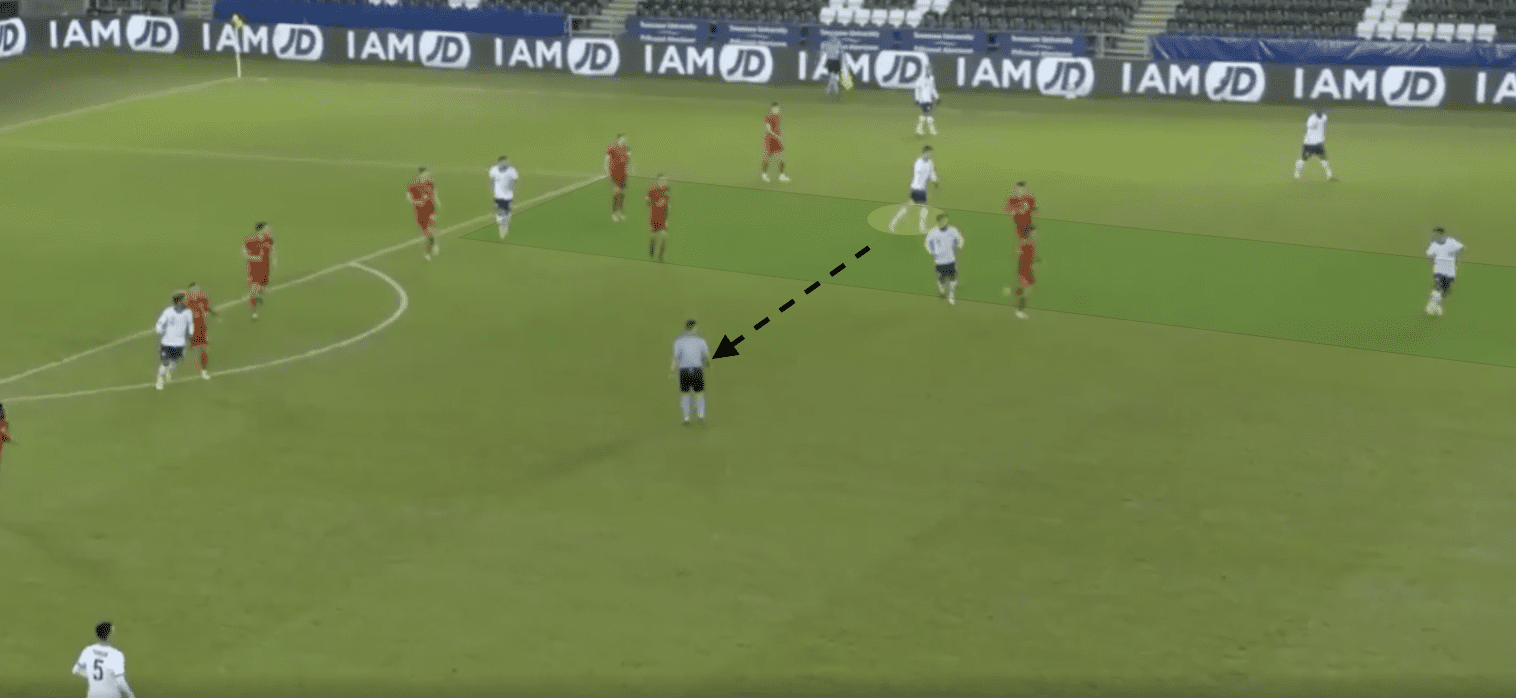
In this case, Reyna does get the ball in the half-space, but can not find any areas of opportunity, leading him to continue his tactical instructions. The so-called winger in this formation quickly becomes an attacking midfielder as he continues to try and find areas to attack. The remaining two in the front three then tuck inside, creating an inverted triangle. These two players effectively act as the strikers, while the wings are being occupied by the wingbacks.
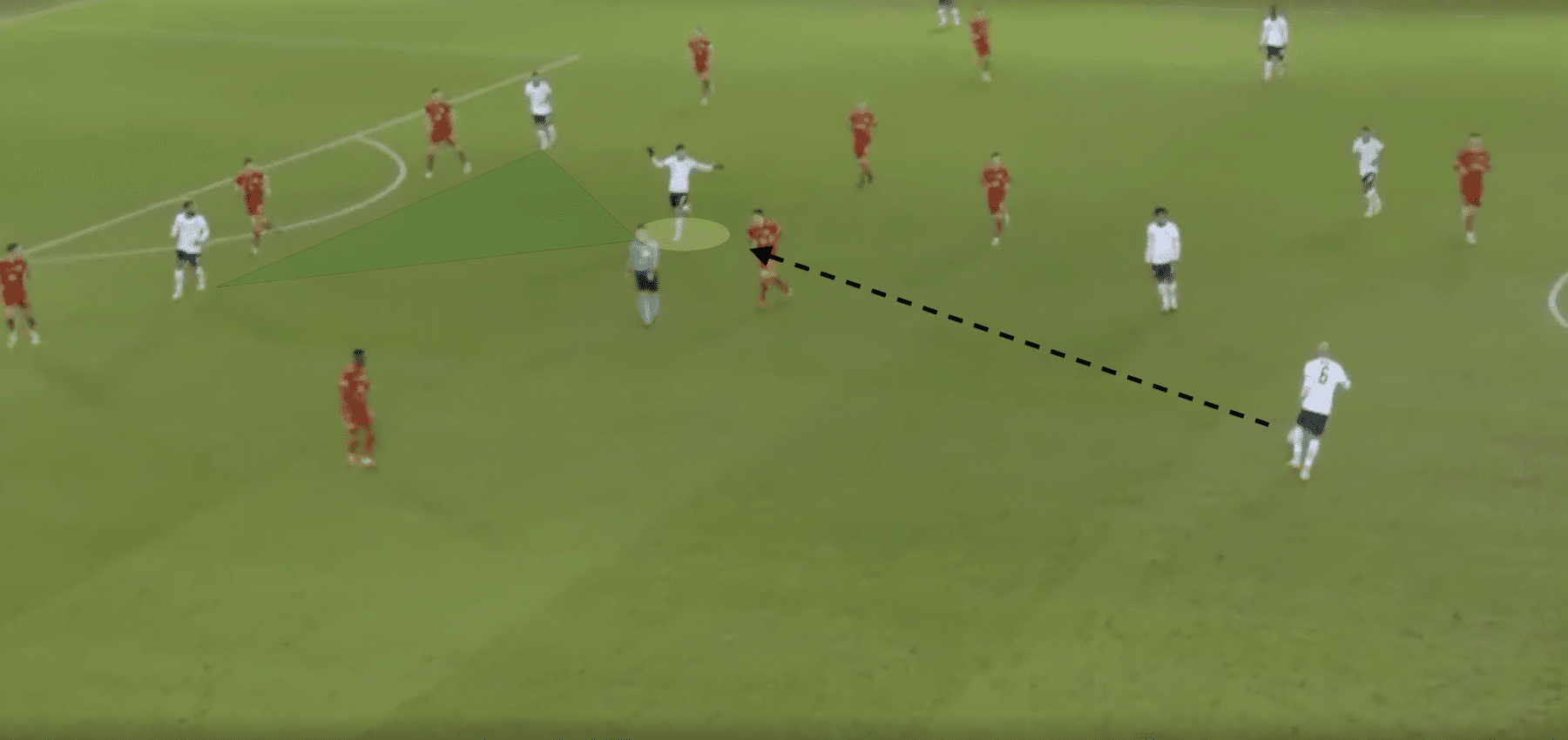
The exact same scenario happens two minutes later when the McKennie wins the ball back in transition and immediately finds Reyna in the half-space. This time, there is more opportunity to take space. Again, the other front three players tuck in to become the two strikers ahead of Reyna, while Robinson emerges at the bottom of the image below making a dangerous run forward. By having Reyna utilising the half-space and letting him drive with the ball, the United States can become very dynamic with the ball while having a balanced midfield. Once Pulisic comes back into the team after injury, there will be so many options for the US. The Chelsea winger is also capable of coming inside and is a strong dribbler on the ball.
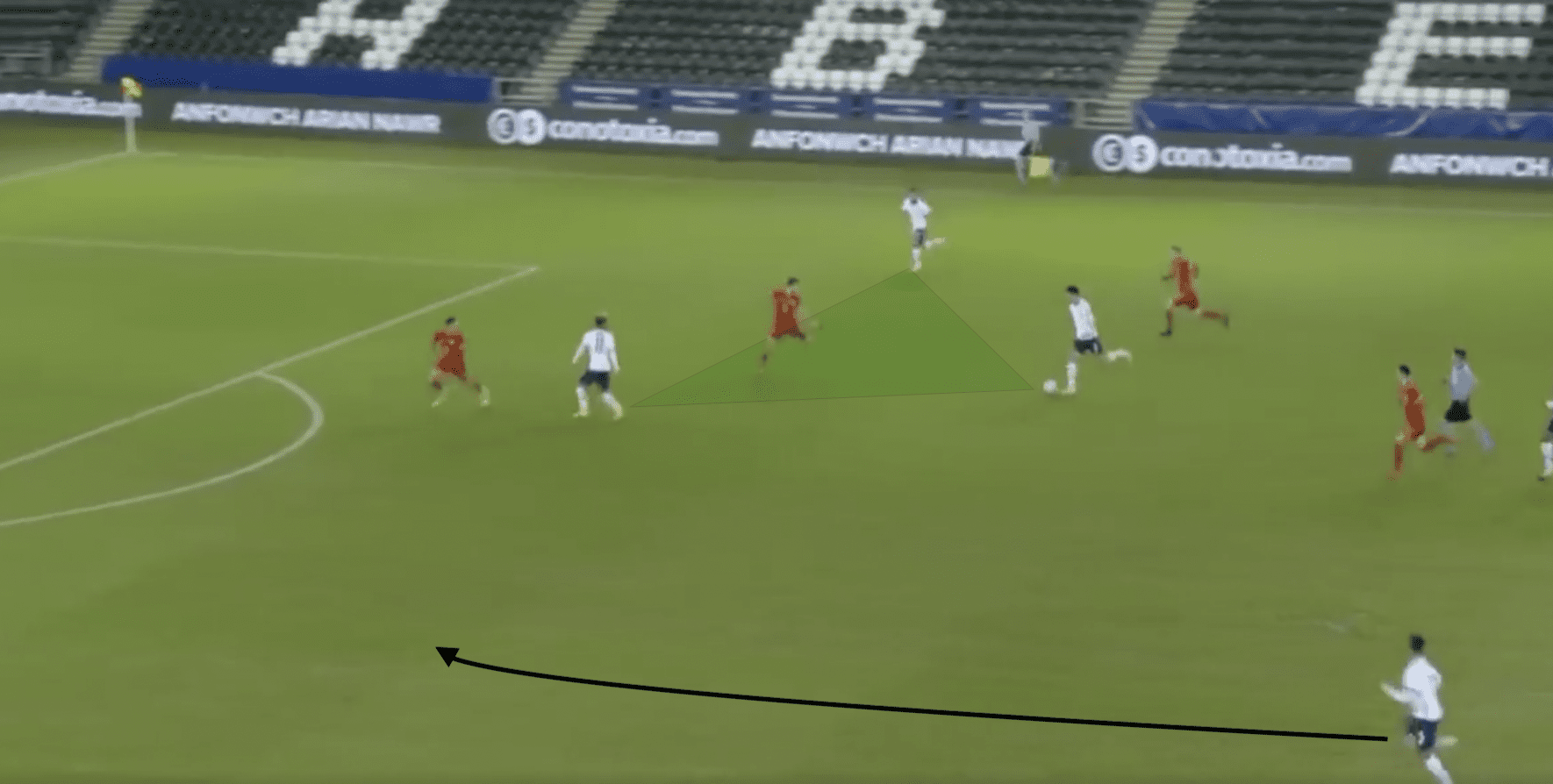
Wingbacks high and wide
Another staple of the attacking tactics utilised by Berhalter in the match against Wales was the use of his outside backs. Both Dest and Robinson were pushed high up the pitch while the United States was in possession. However, Dest was further up the pitch due to the tactical instructions Reyna was carrying out. This allowed Dest to comfortably take up the space that Reyna left open when coming inside. Again, this is fantastic by Berhalter, who recognizes the tactics and attributes of his players. He knows that Dest is comfortable in this role at Barcelona, hence why the Catalan giants signed him. Berhalter is not trying to change the strengths of his players; he is implementing tactics that work to their strengths.
Within the first three minutes of the match, there is evidence of Dest’s tactical instructions to get him high up the pitch. We see Reyna highlighted too, which again shows the tactics of him coming inside. Dest has space and pace to get in behind the Welsh defense from the position he finds himself in. This creates major problems for Wales whose left-back always has to be aware of the threat as well as dealing with players in the half-spaces next to him. Because the ball is on the opposite side of the pitch, this tactic works well with players like McKennie who can play effective long balls.
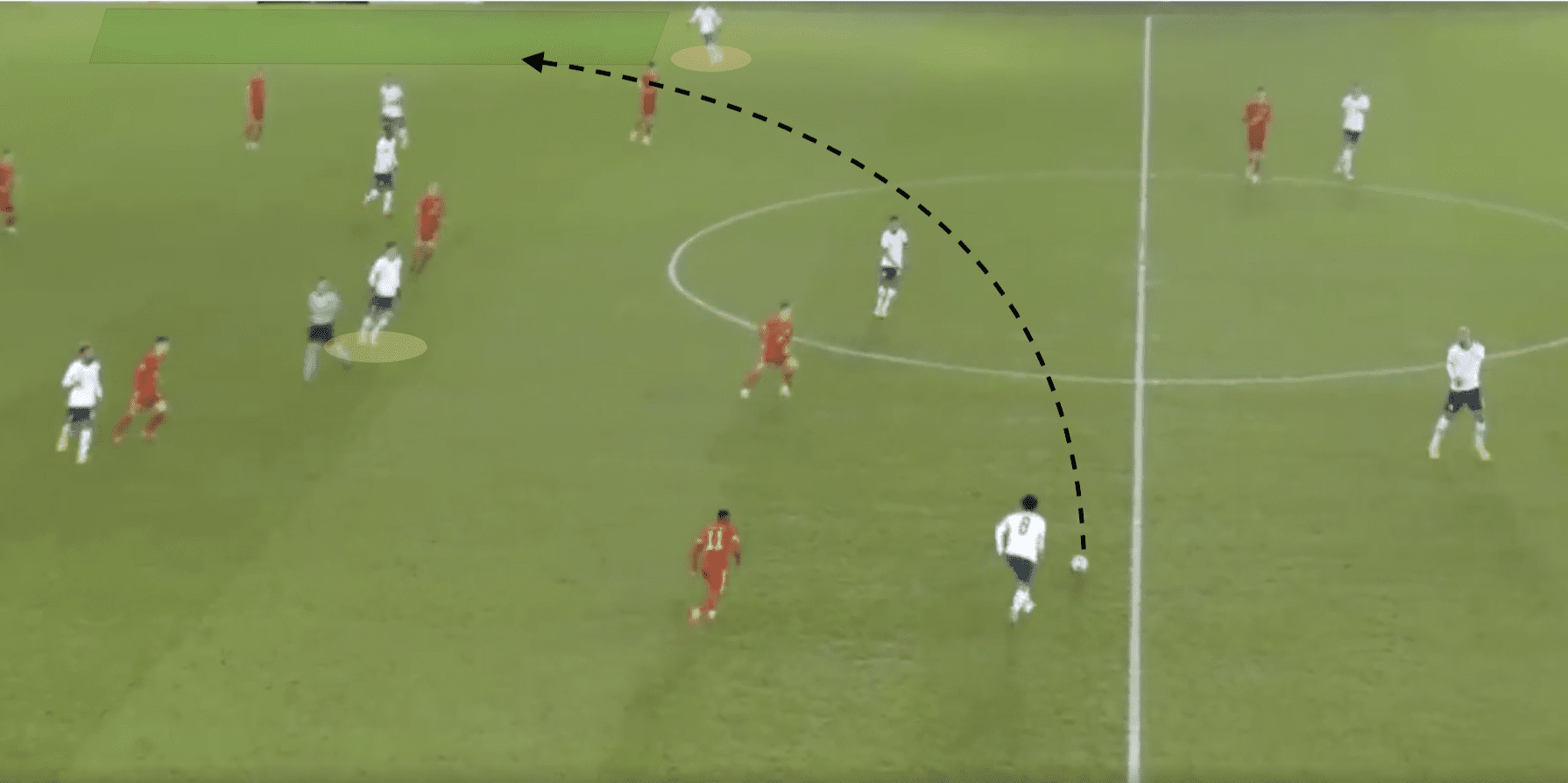
Another example of this tactic to get the wingbacks occurs later in the match. This time McKennie breaks the press and is in a great space to deliver a ball to Dest. Robinson is also highlighted, showing the positive nature of both wingbacks in this situation. This is a risky way to play, but if the US is comfortable in possession like they were against Wales, then it is the right way to play. There is a lot of congestion in the middle of the pitch, allowing for the ball to Dest to be on again.
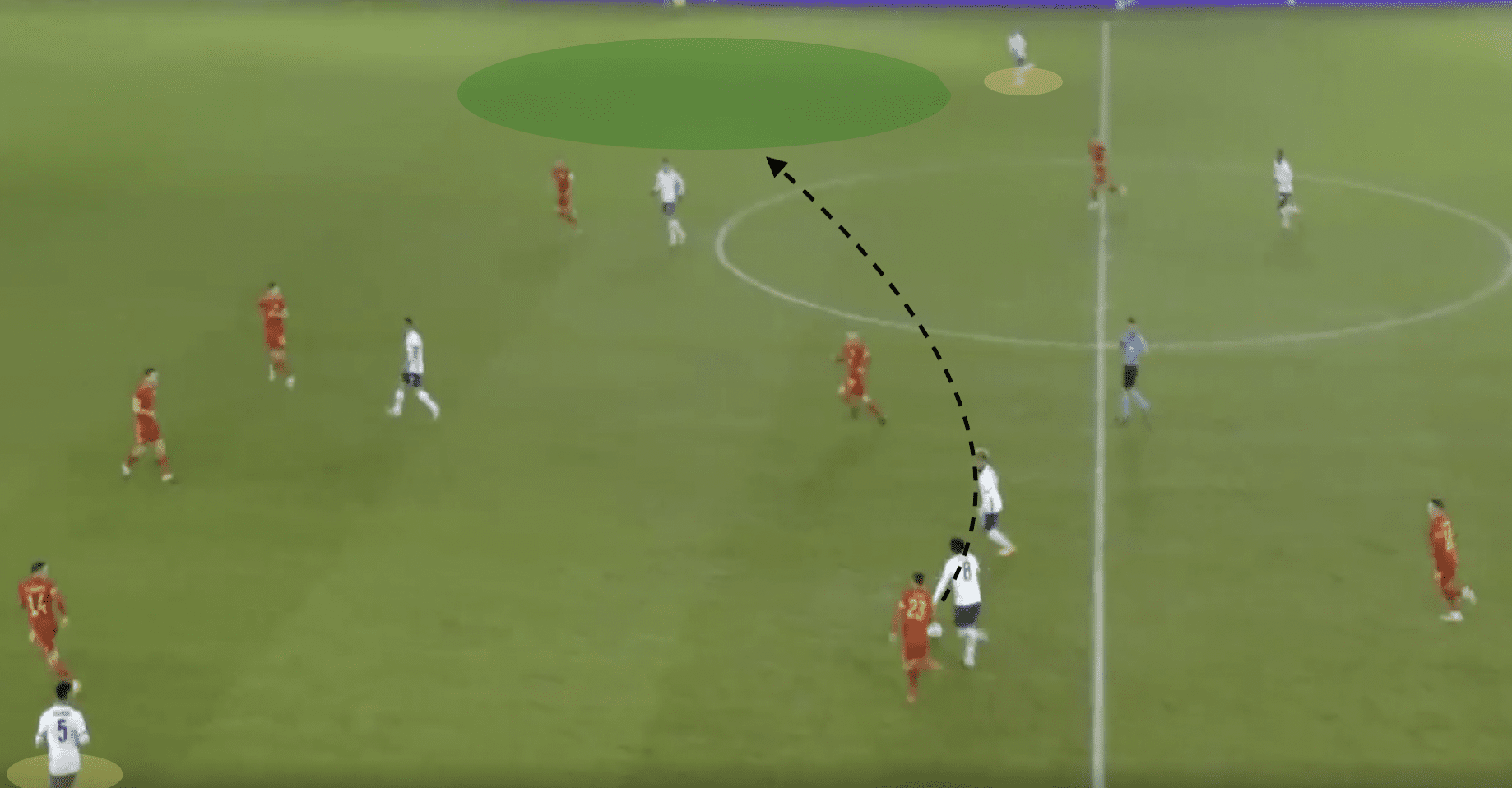
Attacking Rotations
Due to the constant rotation of the front three, there are lots of spaces that open up all over the pitch, especially on the wings. The outside backs do take up those spaces, but they can not be there all the time. Sometimes it is important for the outside backs to help build possession out of the back, especially when there is a transition to attack that happens in their own defensive third. Because players from the front three, especially Reyna, come and check inside to demand the ball, this leaves areas of the pitch open. The midfield can become congested, which calls for a run into the space by one of the midfielders.
Having players like Musah in the side can add this level of complexity and dynamic ability to an attack. While playing for Valencia in La Liga, Musah plays as a right midfielder and is less central. He can effectively take on the role in the center of the park, but he has more experience at a high level outside. Yet again, Berhalter knows this and plays to the strengths of his players with his tactics. He encourages Musah to get out wide when the play requires Dest to be a clear and safe option for the centre-backs. An example of this occurs in the analysis below when Dest is being the support for Matt Miazga and John Brooks. Reyna is trying to find a passing lane to show for Dest, while Musah immediately darts into the area left by the Dortmund youngster.
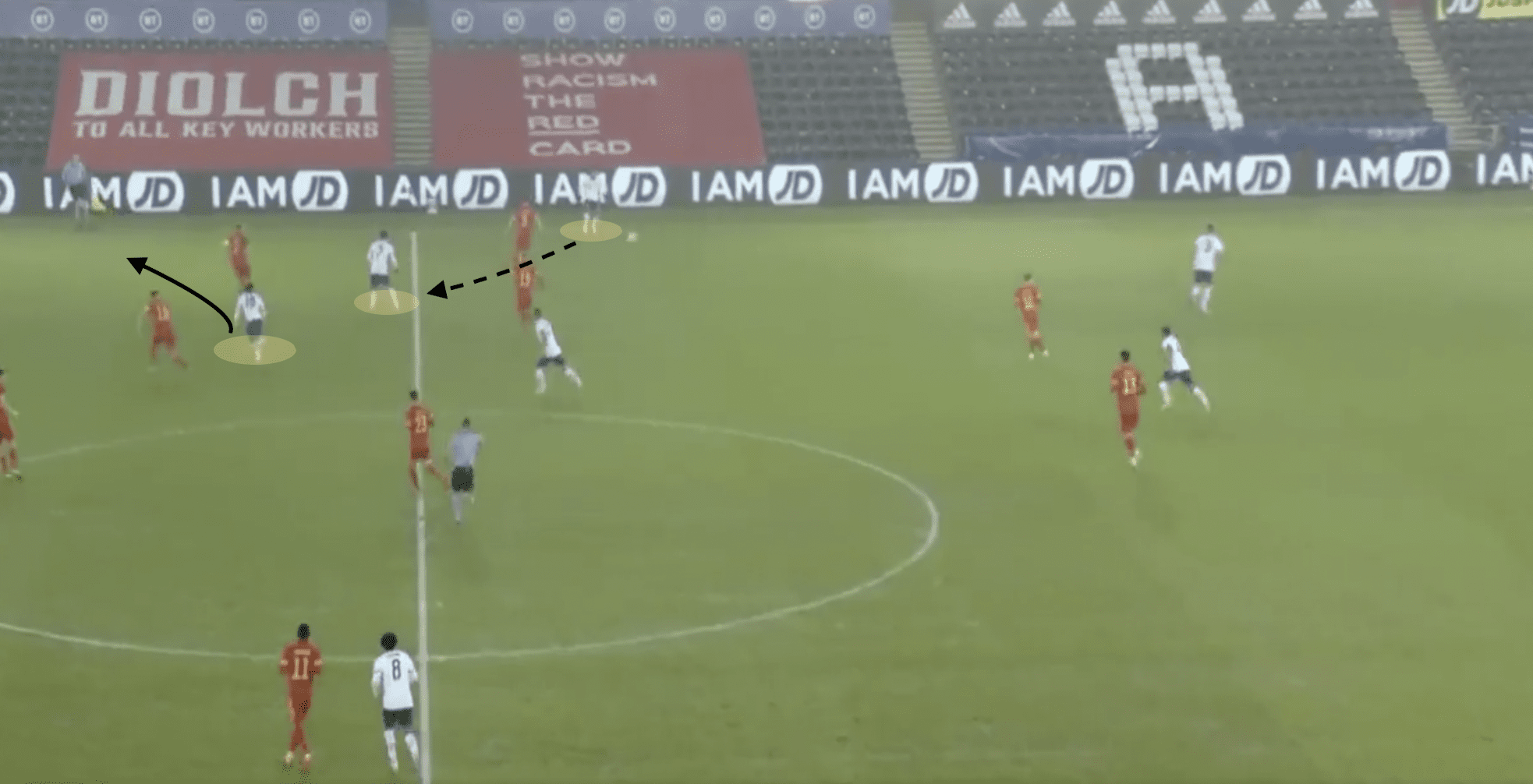
Almost ten minutes later, a similar yet slightly different situation happens. This time, Musah goes out to the touchline and is stationed there, similarly to how Dest would be available for the cross-field ball into space. The ball has been recycled, and Dest found himself in the half-space to support the possession of the ball. Musah intelligently recognizes this and moves out wide, showing the effective attacking rotations the US national team executes.
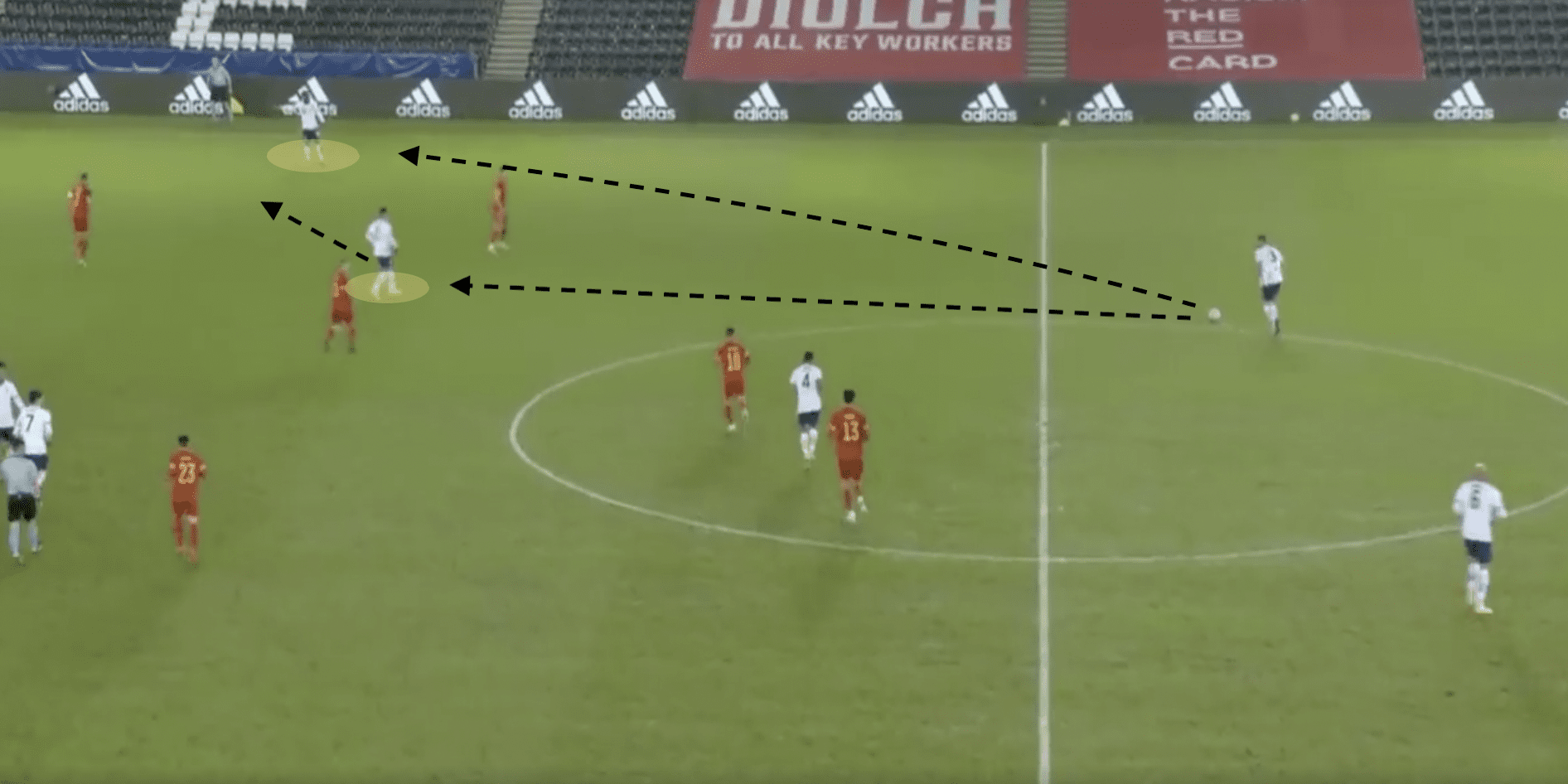
Finally, some attacking rotations take place in the middle of the pitch too. This tactical analysis has focused more on how the team takes space on the wings, but they create space in the middle too. Because the center can get congested with the front three taking up the inverted triangle, rotations need to occur. An example materializes when Brooks is in possession. The triangle is present, and the pitch is fairly congested. McKennie understands this and makes a forward run. Although this is not a high percentage pass that would lead to a goal, that is not its’ purpose. The Juventus midfielder makes this run to test the centre-backs and create more space in the midfielder for the front three to work. As you can see, the Welsh centre-backs’ inertia is moving towards the goal, indicating that one of them is prepared to follow McKennie’s run. This opens up the space highlighted below.
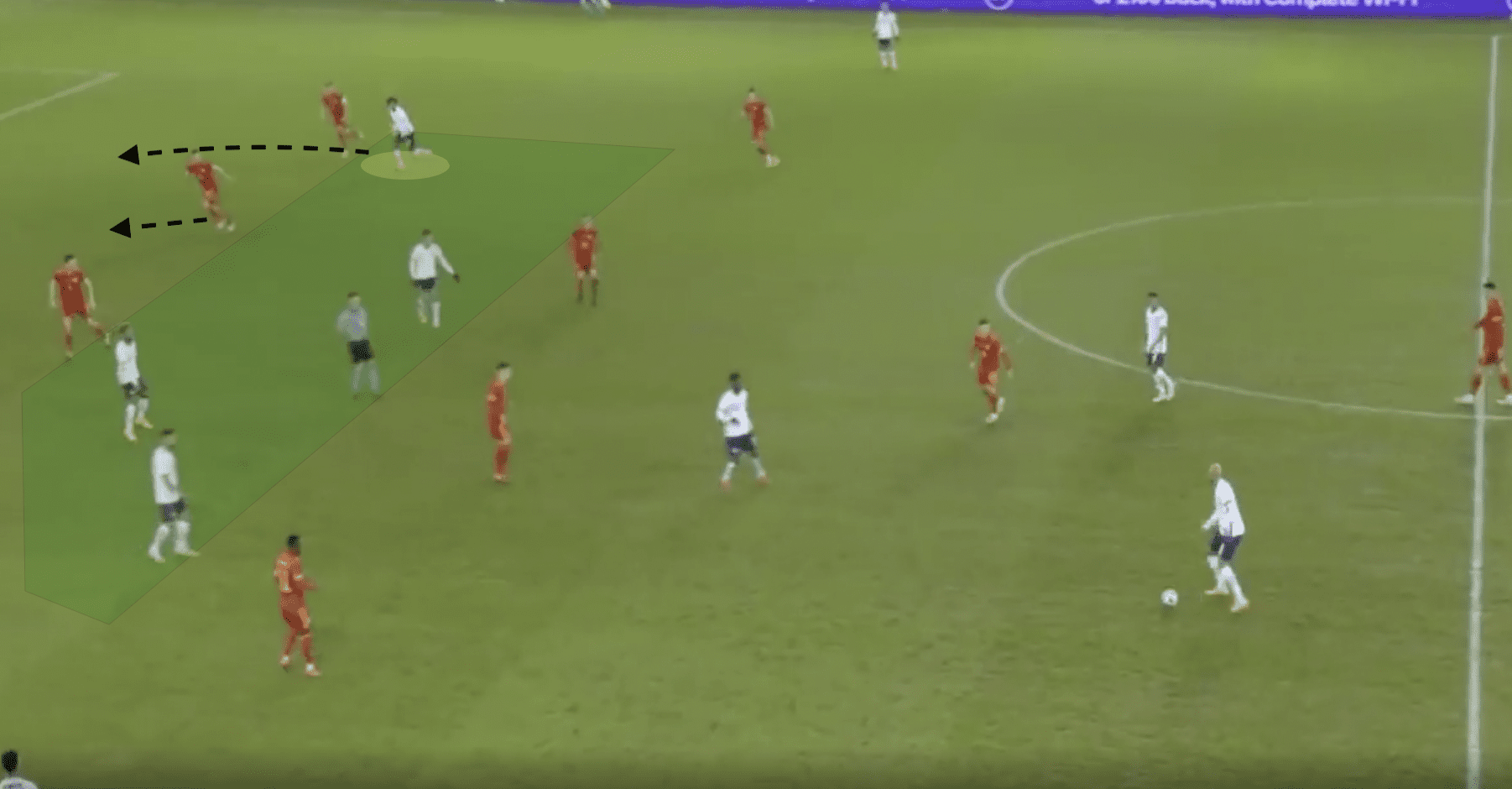
All of these attacking rotations displays that the US national team is beginning to execute more complex attacking tactics that will prove to be useful as they look to create more goals.
Conclusion
This tactical analysis primarily focuses on the attacking tactics of the US Men’s National Team. Through dynamic play from the front three and wingbacks, paired with the intelligence of attacking rotations from the midfielders, the US has a strong base to build off of as Berhalter looks to lead this next generation to new heights.
While this is not a direct comparison, the balance and tactical diversity present in the side resembles that of Liverpool. Now, before one questions this claim, let’s analyze. The United States is implementing a 4-3-3 formation that focuses on a front three, which makes use of an attacking player in the center forward role. They have a balanced midfield three who are all capable of high energy defending and possess a strong array of passing distances. These midfielders are not goalscorers, yet an integral part of the team where their primary job is to protect the defense and distribute to the front three. The outside backs in this tactical set up are commonly high and wide, almost adding another set of wingers to the attack.
This description closely mirrors how Roberto Firmino is deployed at Liverpool while Sadio Mané and Mohammed Salah become left and right forwards. The midfield of Liverpool will not score many goals, but they make the game tick. Finally, Trent Alexander-Arnold and Andrew Robertson are typically high and wide, creating another dimension to the Liverpool attack.
This prospect is something for supporters to get excited about. While they are nowhere near the execution level of the Premier League Champions, the blueprint to emulating a similar style is set.






Comments